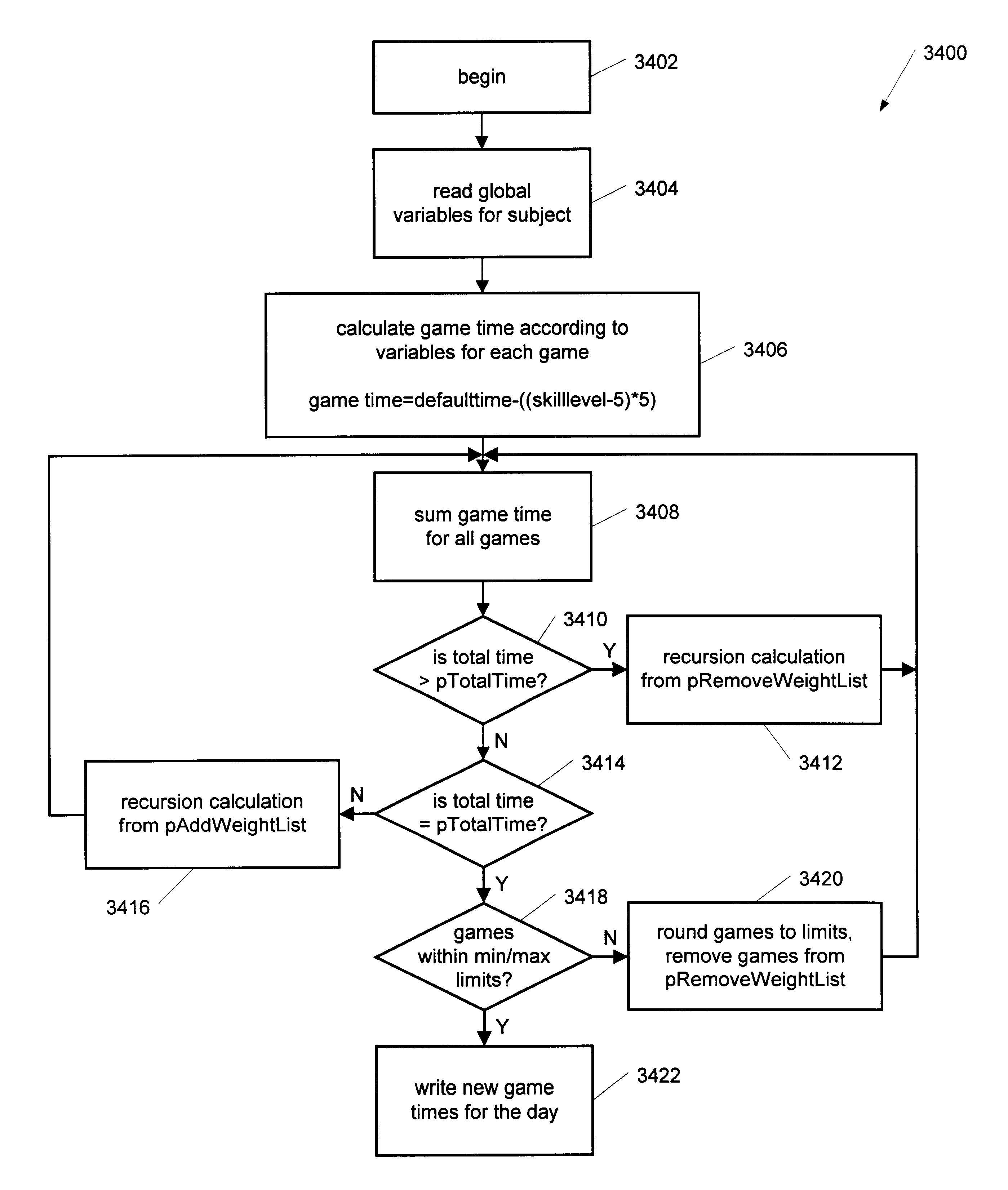Method and apparatus for cognitive training of humans using adaptive timing of exercises
a technology of adaptive timing and cognitive training, applied in the field of human subject education, can solve problems such as academic failure, emotional and disciplinary problems, and people with lli's difficulty in detecting and identifying sounds
- Summary
- Abstract
- Description
- Claims
- Application Information
AI Technical Summary
Problems solved by technology
Method used
Image
Examples
Embodiment Construction
Level 2
1. Attribute / Stative
Stimulus: The ball is big.
The man is big.
The ball is small.
The ball is big.
Stimulus: The cup is broken.
The wind up toy car is broken.
The cup is broken.
The cup is not broken.
Stimulus: The baby is crying.
The baby is not crying.
The boy is crying.
The baby is crying.
Stimulus: The box is open.
The box is open.
The box is closed.
The can is open.
Stimulus: The girl is dirty.
The girl is dirty.
The shoe is dirty.
The shoe is not dirty.
2. Simple Negation.
Stimulus: The boy is not eating.
The boy is not eating.
The boy is eating.
Stimulus: The boy is not riding.
The boy is not riding.
The boy is riding.
Stimulus: The baby is not crying.
The baby is crying.
The baby is not crying.
Stimulus: The boy does not have a balloon
The boy has a balloon.
The boy does not have a balloon.
Stimulus: The girl does not have shoes
The girl does not have shoes.
The girl has shoes.
3. Object Pronouns: Him&Her
Stimulus: Point to her.
A girl doll.
A boy doll.
Stimulus: Point to him
A girl doll.
A boy doll.
Stimulus:...
PUM
 Login to View More
Login to View More Abstract
Description
Claims
Application Information
 Login to View More
Login to View More - R&D
- Intellectual Property
- Life Sciences
- Materials
- Tech Scout
- Unparalleled Data Quality
- Higher Quality Content
- 60% Fewer Hallucinations
Browse by: Latest US Patents, China's latest patents, Technical Efficacy Thesaurus, Application Domain, Technology Topic, Popular Technical Reports.
© 2025 PatSnap. All rights reserved.Legal|Privacy policy|Modern Slavery Act Transparency Statement|Sitemap|About US| Contact US: help@patsnap.com

